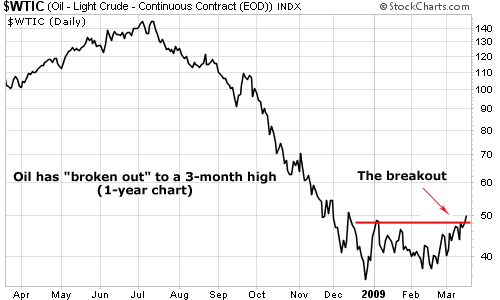The Next Big Disaster Will Be Insurance Stocks
By Dan Ferris
A major North American life insurance company will fail this year...
I'm talking about AFLAC, Ameriprise, Hartford, MetLife, Prudential, or another familiar insurance provider, possibly the one that holds your life insurance policy. At least one of these companies is going under very soon. Let me explain...
Insurance companies have been the largest purchasers of corporate debt every year since the 1930s. If Berkshire Hathaway and its financial fortress balance sheet can be downgraded from triple-A status (by Fitch Ratings last week), you should assume a great swath of investment-grade corporate debt is in imminent danger of being downgraded to junk.
---------- Advertisement ----------
The next stock to crash
On April 30th – just a few weeks from today – a Seattle company's stock will take a huge nose-dive.
There are 2 things you need to know about this situation: First, make sure you don't own any shares. And second, you might want to consider actually making money on the call.
Click here to learn more.
-----------------------------------
Here's the thing: Insurance companies are state regulated. Every state determines how much capital insurance companies have to keep on hand using a "risk-based" model provided by the National Association of Insurance Commissioners. Risk-based just means it's based on financial strength and credit ratings published by A.M. Best, Standard & Poor's, Moody's, and Fitch.
As the corporate debt market collapses, life insurance companies will fall well below the capital requirements of the risk-based models used by the states. When news leaks out, it'll trigger a panic.
The same way banks can experience deposit runs, life insurance companies can experience runs from policyholders. And the same way the FDIC backs up bank deposits, state insurance guarantee funds back up life insurance policies.
Those state funds are in even worse shape than the FDIC. Nationwide, they hold a total of just $8 billion. According to a report by investment firm Bridgewater Associates, only $21 billion of claims have been processed through these funds in the last 25 years. They are not at all prepared for the insolvency of a major life insurer. But life insurance policyholders are hurting along with everyone else. They'll start cashing policies at an even faster rate once they see headlines about insurance companies going broke.
They haven't seen those headlines yet because many life insurance company assets are reported at historical cost, not current market value. Life insurance companies do report losses based on current market values... but view those losses as temporary. That has delayed the realization there's a problem, potentially making it much worse.
Some of these stocks have fallen so far already that raising cash by selling more shares is no longer an option. Genworth, Phoenix Companies, Conseco, and AIG are all penny stocks.
Aside from being the world's biggest corporate bondholders, life insurance companies are also major commercial real estate lenders. A lot of commercial real estate projects are going bust. All kinds of real estate lenders are seeing huge losses.
 | ||||
| ||||
The S&P 500 got killed last year and made new lows recently. Losses on hedges for these contracts are already enormous. The reinsurance for these products is probably more expensive now, too.
Nobody thought AIG could ever become a penny stock, but here it is, trading below $1. Several other major insurance companies are headed in the same direction.
You could short a basket of life insurance companies and probably do pretty well over the next year. I'd stick with the largest, most liquid names as a proxy for the entire industry.
Good investing,
Dan
P.S. I just told Extreme Value readers about my favorite stock to short in the insurance industry. This well-respected company is in the same position AIG was a few years ago. If all its "unrealized" losses turn to permanent ones, it could easily fall in half. If you'd like to access this issue – and to learn about my idea for playing a "distortion" I've uncovered in the gold market – click here.
 |
| CRUDE OIL HAS OFFICIALLY STAGED A "BREAKOUT" Folks, we now have an official "breakout" in crude oil... Back on February 28, we claimed "the floor is in" for crude oil. Most of the black stuff is used to fuel jets, heavy equipment, tractor-trailers, and cars... so the weak economy helped oil crash from $140 a barrel to $35 a barrel. As you can see from today's chart, oil rebounded off its November $35 lows to reach spitting distance of $50 a barrel. February's small asset panic sent oil just below $40. That period featured important price action: The bears had all the bearish economic reports they could ask for and couldn't beat oil back down to its old low. And even though economic conditions are still terrible, oil has broken out to a new three-month high. Oil is due for a pullback after such a great little run. But one has to be bullish on an asset that can't sink lower in the face of terrible news. The oil trade is on... and this glimmer of light just got brighter.  |





















